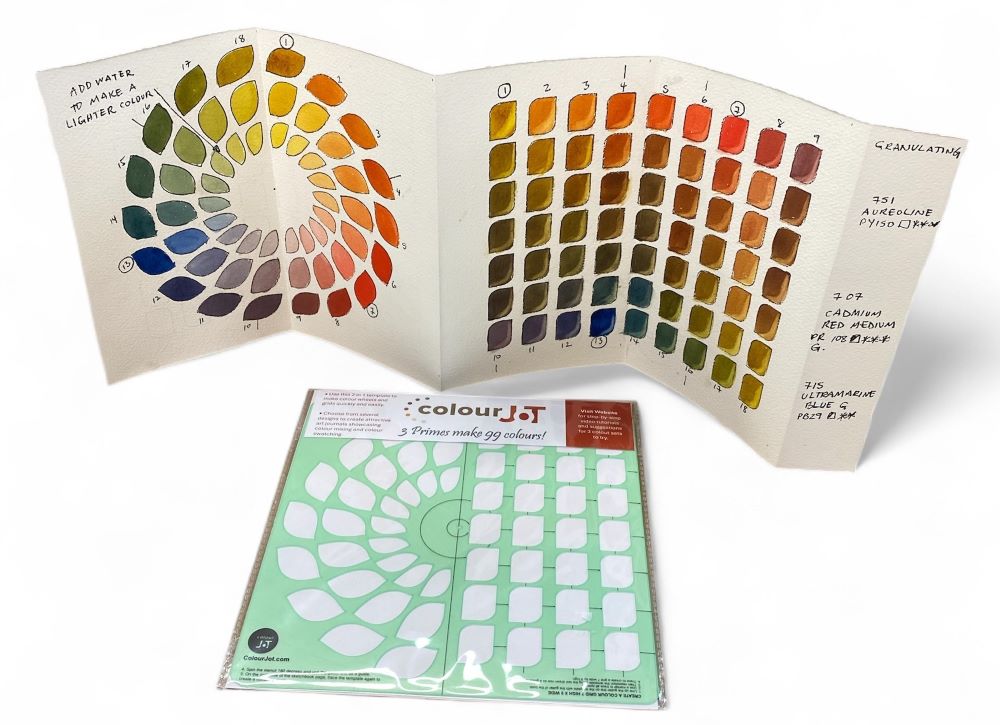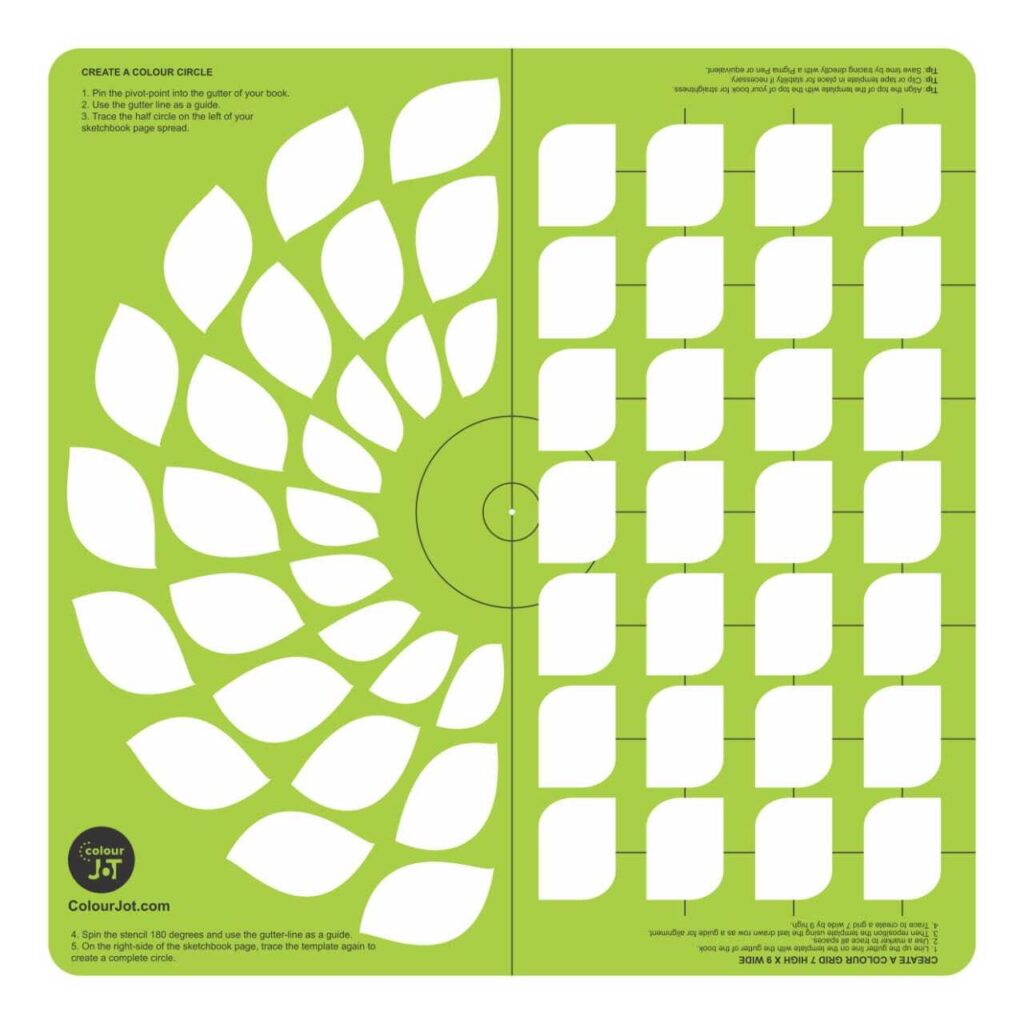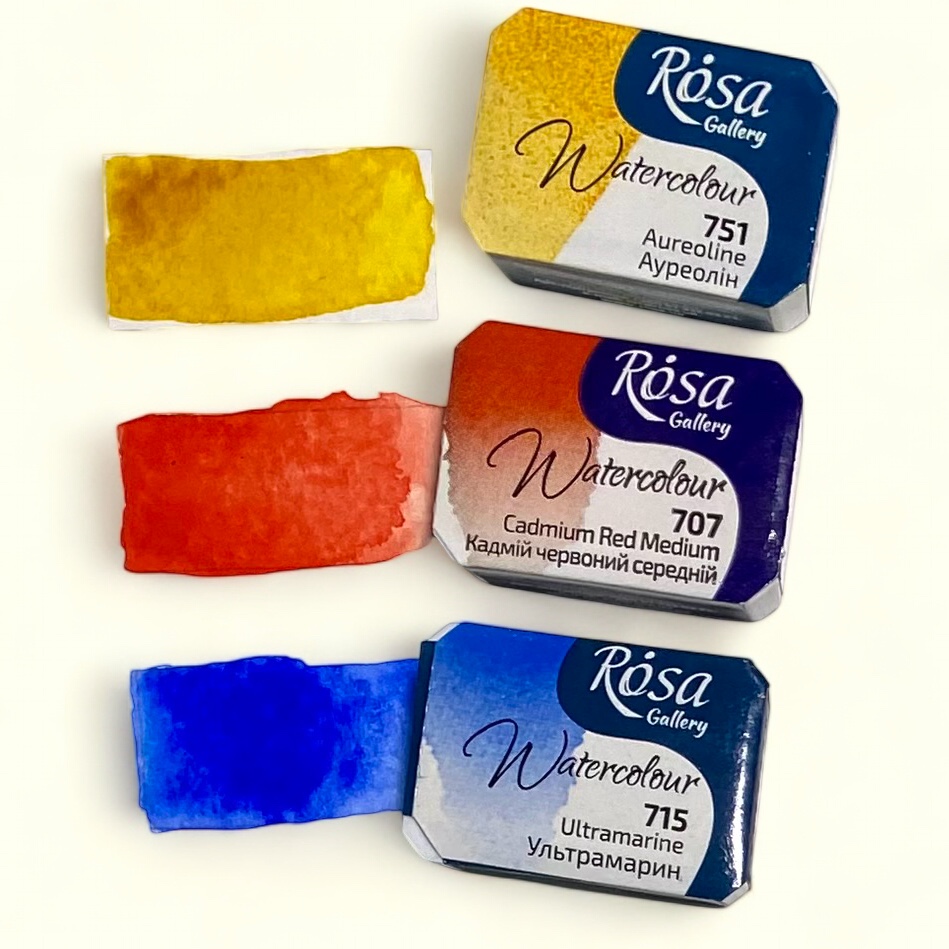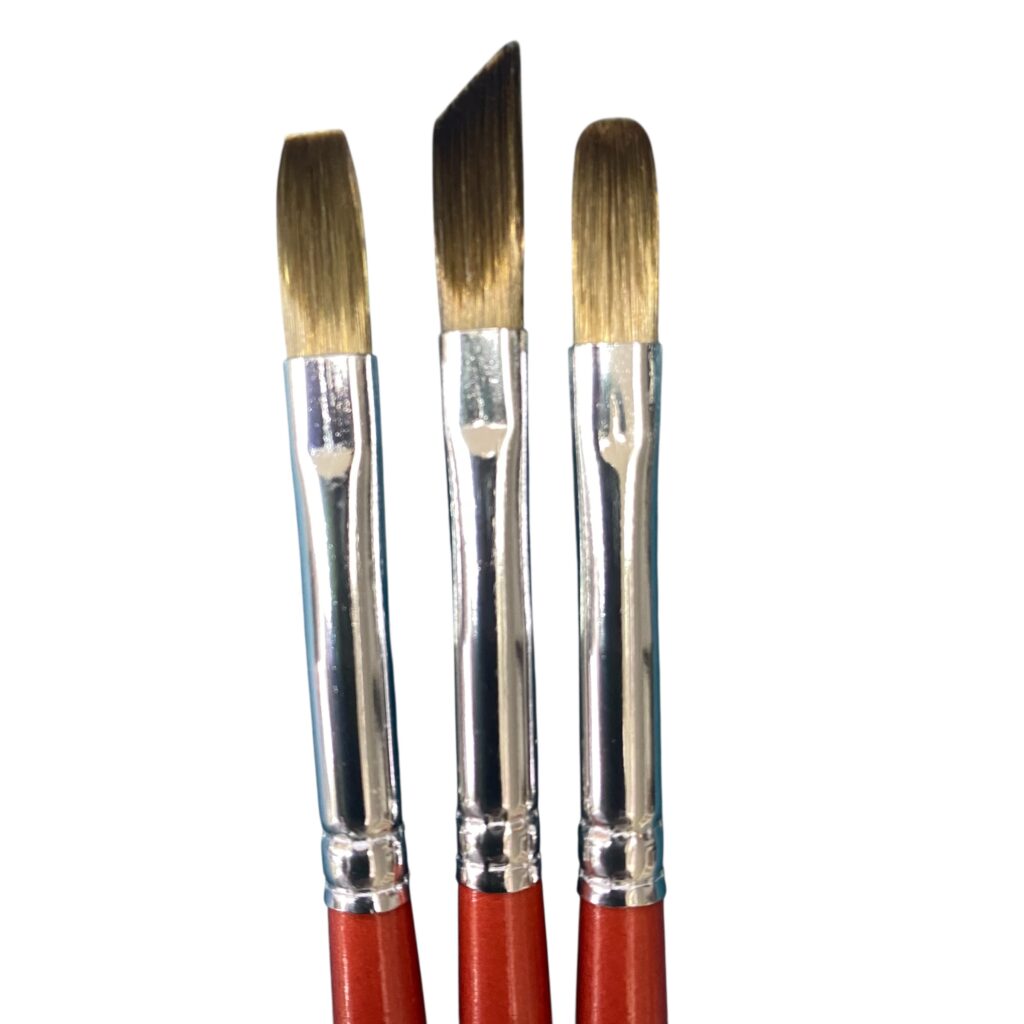Beginner’s Guide to Colour Theory: Mastering the Art of Colour Mixing with the ColourJot System
Welcome to the world of colour mixing for watercolour! If you’re new to colour theory, this guide will walk you through the basics using the ColourJot system—a fun and practical way to explore the magic of colours. Whether you’re an aspiring artist or just curious about how colours work together, this tutorial will help you create harmonious palettes and understand the fundamentals of mixing.
Supply List
A full sheet of 22″ x 30″ watercolour paper was used to make the accordion pamphlet shown in the video. Make one yourself or buy an accordion book. Here are other items to pick up:
Getting Started with ColourJot
The ColourJot system is designed to make colour mixing approachable and enjoyable. For this tutorial, we’ll use stencil CJ03, a leaf-patterned template with 18 sections. This stencil is perfect for practicing curved edges and sharp points while exploring the relationships between colours.
Step 1: Setting Up Your Colour Wheel
- Trace and Number: Start by tracing the stencil with a black waterproof marker. Number the sections 1 to 18 clockwise. The outer row will hold pure colours, while the inner rows will showcase diluted tints.
- Mark Your Grid: On a separate grid, replicate the stencil’s shapes. Number the top row 1 to 9 and the bottom row 10 to 18. This grid will help you track and replicate your colour mixes.
Step 2: Choosing Your Colours
For this exercise, we’re using the Rosa watercolour set (Set A), which includes:
- Aureoline (Cobalt Yellow): A bright, lemony yellow with an ochre undertone.
- Cadmium Red Medium: A vibrant, warm red.
- Ultramarine Blue: A deep, rich, warmblue.
These three primary colours are ideal for beginners, as they allow you to create a wide range of secondary and tertiary colours. These are a subdued traditional colour set.
Mixing Colours: The Basics
The beauty of watercolour lies in its transparency and ability to create glowing, layered effects. Here’s how to start mixing:
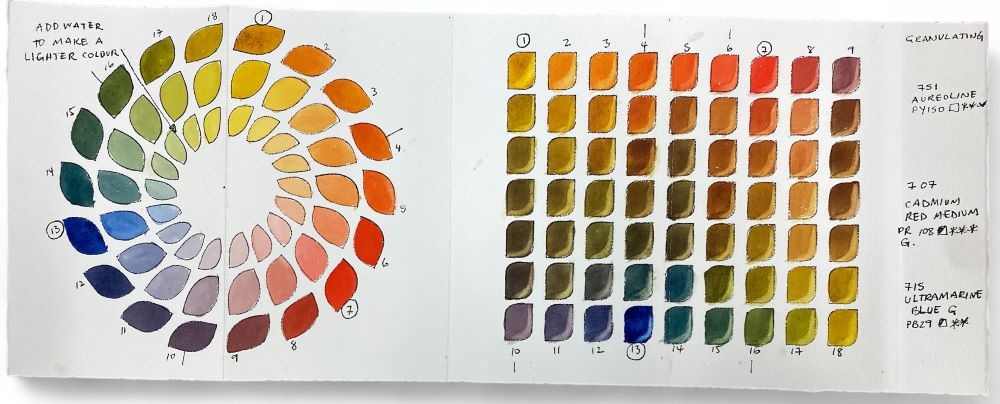
Pure Colours and Tints
- Paint Pure Colours: Begin by painting each primary colour in its designated spot on the colour wheel and grid. Use a bold, saturated application for the outer row.
- Create Tints: Gradually dilute the colour with water to create lighter shades. This technique reveals the undertones of each pigment and adds dimension to your palette.
Blending Primary Colours
- Yellow + Red = Orange: Mix areolin and cadmium red to create a spectrum of oranges, from bright yellow-orange to deep reddish-orange.
- Red + Blue = Purple: Combine cadmium red and ultramarine blue. Note that this combination produces muted purples due to the warm undertones of the red.
- Blue + Yellow = Green: Blend ultramarine blue with aureoline to create a range of greens, from acidic chartreuse to earthy olive tones.
Exploring Complementary Colours
Complementary colours are opposite each other on the colour wheel (e.g., red and green, blue and orange). Mixing these colours creates muted, earthy tones that are perfect for naturalistic paintings.
Tips for Mixing Complements
- Add the darker colour incrementally to the lighter colour for better control.
- Use a ceramic palette for clean mixing and easy colour comparison.
- Experiment with different ratios to achieve subtle variations in tone and intensity.
Advanced Techniques
- Lifting Colours: To create highlights or lighter tints, wet the painted area, let it sit for a moment, and lift the colour with a paper towel. This technique adds dimension and texture to your work.
- Layering for Harmony: By using a limited palette, all your colours will share common pigments, resulting in a harmonious and cohesive look.
Why Practice Colour Mixing?
Mastering colour mixing isn’t just about creating beautiful charts—it’s about training your eye and hand to instinctively mix the exact colour you need. Over time, you’ll develop an intuitive understanding of how colours interact, making your painting process faster and more enjoyable.
Final Thoughts
With just three primary colours, you can create an astonishing 144 unique shades by exploring pure colours, tints, and complementary mixes. The ColourJot system is a fantastic way to practice and document your colour experiments, providing a valuable reference for future projects.
So grab your paints, brushes, and stencil, and start jotting down your colours. Remember, perfection isn’t the goal—exploration and discovery are. Happy painting!
